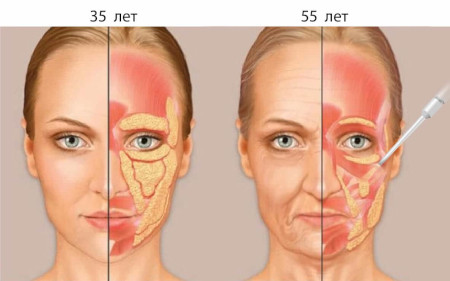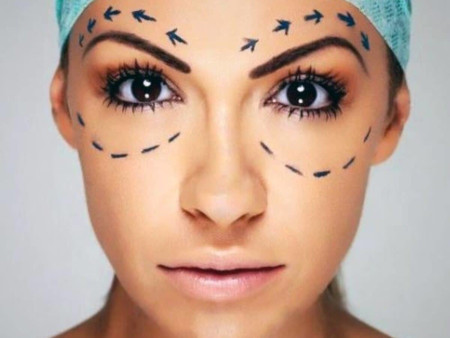Poltava, prospekt Vitaliia Hrytsaienka 9 Weekdays: 8:30-15:00, Weekend: weekend +38 (0532) 56-02-11+38 (095) 688 25 07
Are there complications after lipofilling
 Lipofilling, as an effective way of correcting the face and shape, enjoys steady popularity. This is the most natural method in which the patient's own adipose tissue is used to compensate for the lack of volume and improve the contours. For this, the fat removed from the donor area, after cleaning, is transplanted to the place of correction. The procedure not only models the appearance, but also improves the condition of the skin, rejuvenating it. For example, lipofilling of the hands increases the tone and elasticity of the skin, and also eliminates age spots. Although liposculpture is considered a safe and gentle operation, the risk of complications cannot be rejected 100%, like any other surgical procedure.
Lipofilling, as an effective way of correcting the face and shape, enjoys steady popularity. This is the most natural method in which the patient's own adipose tissue is used to compensate for the lack of volume and improve the contours. For this, the fat removed from the donor area, after cleaning, is transplanted to the place of correction. The procedure not only models the appearance, but also improves the condition of the skin, rejuvenating it. For example, lipofilling of the hands increases the tone and elasticity of the skin, and also eliminates age spots. Although liposculpture is considered a safe and gentle operation, the risk of complications cannot be rejected 100%, like any other surgical procedure.
Causes of complications after surgery
The peculiarity of the autologous material is that it may not take root in a new place. According to statistics, about 20-30% of fat cells die and are absorbed in tissues. Which leads to unsatisfactory results of the operation.
Why is this happening:
- not all of the cells are viable. In obese people, adipocytes are weaker than in lean people;
- equipment and materials damage some of the cells during cleaning;
- excessive volume of transplanted tissue: cells do not receive enough nutrition and oxygen;
- smoking has a negative effect on fat survival.
Other reasons why side effects may occur:
- non-professionalism of a doctor who used the wrong technique (superficial or excessive introduction of biomaterial, medical errors, etc.);
- sudden migration of fat;
- clumping of fat cells;
- penetration of infection;
- accumulation of blood;
- the development of connective tissue (fibrosis) due to the characteristics of the body;
- non-compliance with rehabilitation recommendations, indiscipline of the patient.
Even the excellent work of the surgeon does not give a 100% guarantee that there will be no complications. However, the experience and qualifications of the doctor and the reliability of the clinic reduce the risks of side effects to zero.
Complications in the donor area
In areas from which fat is removed, there are the following consequences:
- an infection localized at the sites of punctures or stitches;
- seroma or cyst, which is a capsule of fluid under the skin or at the seam;
- large hematomas that occur during a major intervention, when a vessel is damaged;
- unaesthetic scars at puncture sites;
- asymmetry and deformation of the figure, with a large volume of seized material;
- organ perforation - medical non-professionalism, is extremely rare.
There are both conservative and surgical methods of getting rid of the complications that have appeared. Which depend on the type of "side effects" and the severity of the patient's condition.
Complications in the area of material introduction
 What are the possible complications in the field of correction:
What are the possible complications in the field of correction:
- tissue necrosis due to the inflammatory process;
- fatty cyst with liquid content, which is usually punctured (buttocks, chest);
- calcifications - solid fat cells impregnated with calcium salts;
- decreased sensitivity, impaired facial expressions (face);
- asymmetry (buttocks, eyelids), when adipose tissue is unevenly engrafted;
- bumps, bumps, irregularities, when adipose tissue turns into connective tissue due to fibrosis;
- oleogranulomas - seals of fat, due to its movement;
- fat embolism - the penetration of an emulsion into the blood, with large volumes, is a rare occurrence.
- swelling for more than 3-4 months;
- thrombosis, can occur with lipofilling of the legs;
- significant resorption of adipose tissue.
Massages, physiotherapy using special equipment, hormonal agents - methods of conservative therapy. If they are ineffective, additional plastic surgery is prescribed.
Preventive measures to minimize risks
Autologous fat transplantation injures at least 2 areas: the donor area and the correction area. Therefore, compliance with these rules will help to avoid complications as much as possible:
- Wearing compression garments for 4-6 weeks continuously to reduce swelling, better skin contraction and fat acceptance.
- Do not wet the puncture sites for 3 days, treat with antiseptics.
- Exclude sports and physical labor.
- Follow a drinking diet, as well as a special diet (exclude green tea, Omega-3).
- Do not smoke, so that the fat grows faster through the capillaries.
- Do not massage the transplant area on your own.
- Maintain current weight for at least 3 months. You can't lose weight.
- Do not lie on grafts (buttocks, abdomen, thighs, breasts).
However, complications can arise for independent reasons. The main thing is to consult a doctor in time and not self-medicate.
The specialists of the Clinic for Plastic and Cosmetic Surgery guarantee an ideal appearance and minimum risks for lipofilling!
specialists of the Clinic for Plastic Surgery
13-07-2021
Similar news
